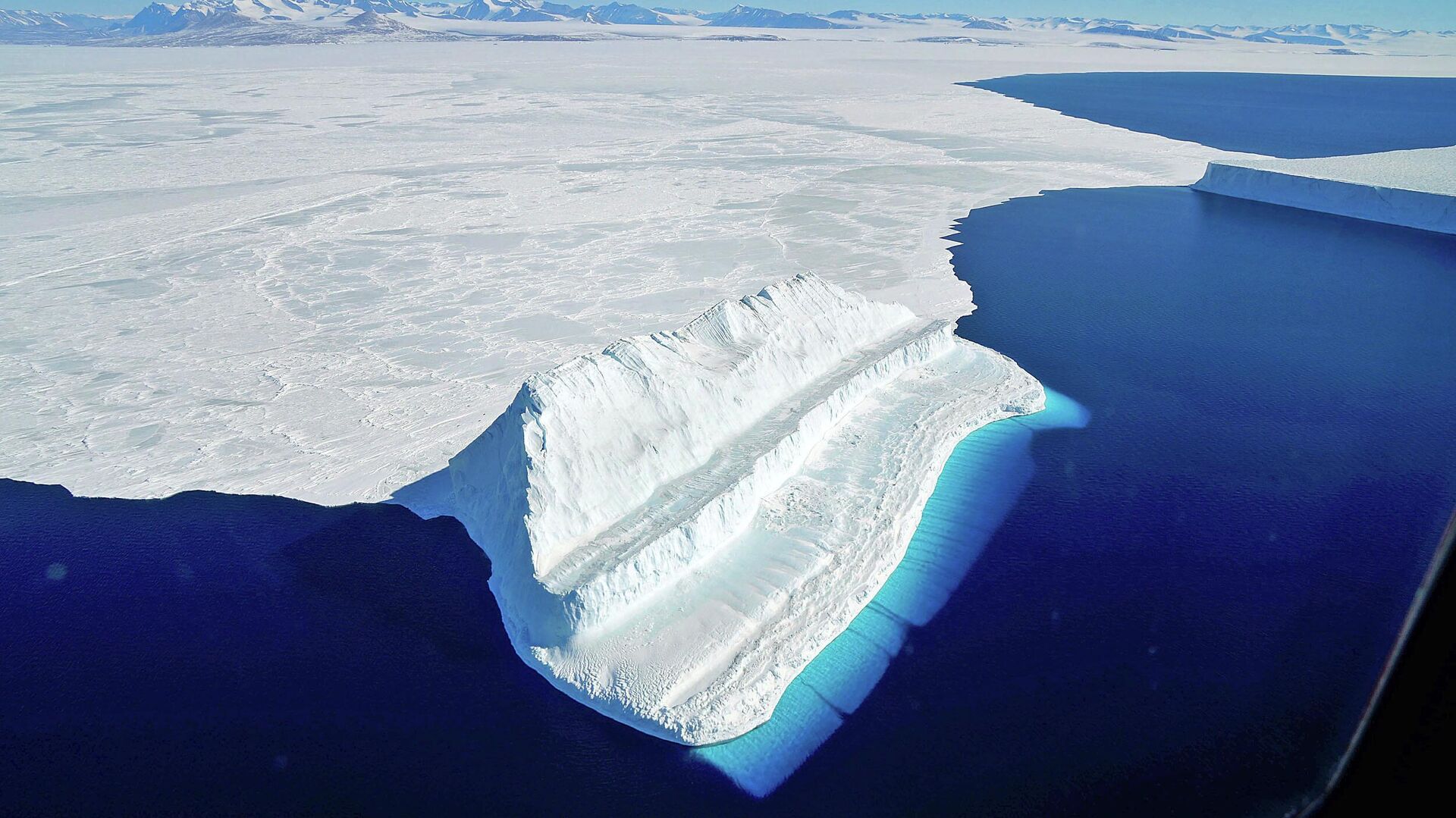https://sputnikglobe.com/20230120/scientists-find-7kg-meteorite-in-antarctica---one-of-the-biggest-finds-in-the-past-century-1106519603.html
Scientists Find 7kg Meteorite in Antarctica - One of the Biggest Finds in the Past Century
Scientists Find 7kg Meteorite in Antarctica - One of the Biggest Finds in the Past Century
Sputnik International
A team of scientists on an expedition to Antarctica found a meteorite weighing more than 7 kg. It is one of the largest meteorites found in the last 100 years, according to data.
2023-01-20T11:29+0000
2023-01-20T11:29+0000
2023-01-20T11:29+0000
science & tech
antarctica
geoscience
meteorite
expedition
findings
https://cdn1.img.sputnikglobe.com/img/07e6/05/07/1095333842_0:131:2500:1537_1920x0_80_0_0_7d7b4772efbb3c713c9b17ca96df740c.jpg
An international team of researchers on an expedition to the frozen wilderness which is the Antarctic has found five meteorites, one of which weighs 7.6kg (16.7lbs). According to scientists, around 45,000 meteorites have been found in Antarctica over the past century, but only about 1 percent are of this size or larger.All meteorites will be analyzed at the Royal Belgian Institute for Natural Sciences. However, the research institutions to which the expedition members belong will receive meteorite sediments that may contain tiny micrometeorites.Such studies are extremely useful because "studying meteorites helps us better understand our place in the universe. The bigger a sample size we have of meteorites, the better we can understand our solar system, and the better we can understand ourselves," says Maria Valdes.As part of the expedition, scientists used a map based on satellite data processed by artificial intelligence. It has made marks for possible meteorite locations: surface temperatures, ice floes and more. The map is 80 percent accurate in giving directions although the remember that there were still difficulties in collecting samples."Going on an adventure exploring unknown areas is exciting," says geoscientist Vinciane Debaille, from the Université Libre de Bruxelles in Belgium. "But we also had to deal with the fact that the reality on the ground is much more difficult than the beauty of satellite images."
Sputnik International
feedback@sputniknews.com
+74956456601
MIA „Rossiya Segodnya“
2023
News
en_EN
Sputnik International
feedback@sputniknews.com
+74956456601
MIA „Rossiya Segodnya“
Sputnik International
feedback@sputniknews.com
+74956456601
MIA „Rossiya Segodnya“
meteorites in antarctica, one of the biggest meteorites in antarctica, how scientists find meteorites, 7 kilograms meteorite in antarctica, 45,000 meteorites
meteorites in antarctica, one of the biggest meteorites in antarctica, how scientists find meteorites, 7 kilograms meteorite in antarctica, 45,000 meteorites
Scientists Find 7kg Meteorite in Antarctica - One of the Biggest Finds in the Past Century
In geoscience research, even small objects, a meteorite the size of a palm or little finger, can prove incredibly valuable. However, finding massive chunks of space rock represents a rare and wonderful opportunity.
An international team of researchers on an expedition to the frozen wilderness which is the Antarctic has found five meteorites, one of which weighs 7.6kg (16.7lbs). According to scientists, around 45,000 meteorites have been found in Antarctica over the past century, but only about 1 percent are of this size or larger.
"Size doesn’t necessarily matter when it comes to meteorites, and even tiny micrometeorites can be incredibly scientifically valuable. But of course, finding a big meteorite like this one is rare, and really exciting."
Maria Valdes
A research scientist at the Field Museum and the University of Chicago
All meteorites will be analyzed at the Royal Belgian Institute for Natural Sciences. However, the research institutions to which the expedition members belong will receive meteorite sediments that may contain tiny micrometeorites.
Such studies are extremely useful because "studying meteorites helps us better understand our place in the universe. The bigger a sample size we have of meteorites, the better we can understand our solar system, and the better we can understand ourselves," says Maria Valdes.
As part of the expedition, scientists used a map based on satellite data processed by artificial intelligence. It has made marks for possible meteorite locations: surface temperatures, ice floes and more. The map is 80 percent accurate in giving directions although the remember that there were still difficulties in collecting samples.
"Going on an adventure exploring unknown areas is exciting," says geoscientist Vinciane Debaille, from the Université Libre de Bruxelles in Belgium. "But we also had to deal with the fact that the reality on the ground is much more difficult than the beauty of satellite images."

